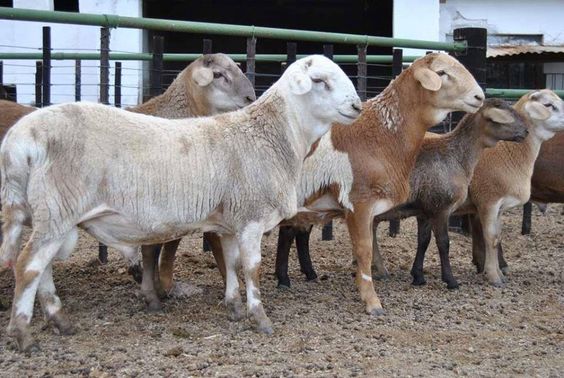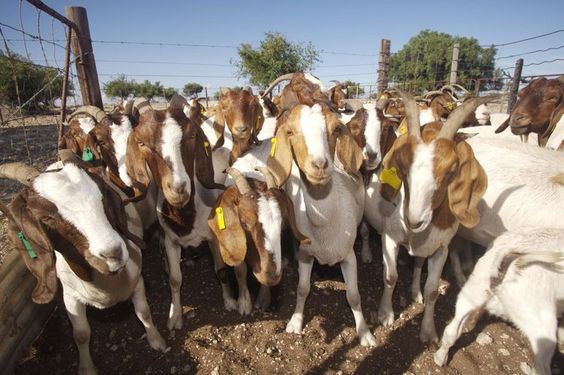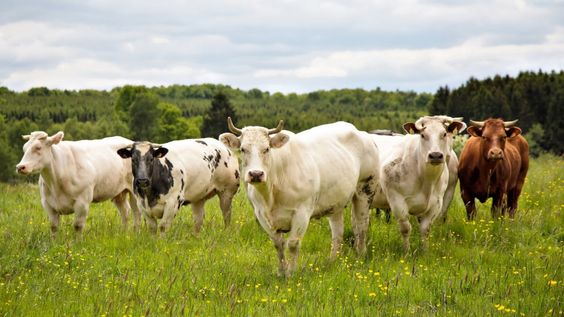Profitable & Sustainable Goat Farming:The Complete Guide to Goat Farming
Goat Farming, the raising and breeding of domestic goats (Capra aegagrus hircus), is a rewarding agricultural practice with a rich history. These versatile animals provide a variety of products, making them a valuable asset to small and large farms alike. If you’re considering entering the world of goat farming, this guide will equip you with the essential knowledge to get started.
Benefits of Goat Farming
-
Diverse Products: Goats offer a multitude of products including meat, milk, fiber (cashmere, mohair), and skins. You can choose to specialize in one product or create a multi-product farm.
-
Low Maintenance: Goats are known for their hardiness and ability to thrive on low-quality forage, making them easier to care for compared to some other livestock.
-
Manageable Size: Goats are generally smaller than other farm animals, requiring less space and potentially lower initial investment in infrastructure.
-
Weed Control: Goats are excellent natural weeders, helping to control unwanted vegetation on your land.
-
Environmental Advantages: Their efficient grazing habits minimize land degradation and can even improve soil quality.
Choosing Your Goat Breed
The first step in your goat farming journey is selecting the right breed for your goals. Here are some popular options to consider:
-
Meat Goats: Boer goats, known for their rapid growth and high-quality meat, are a popular choice for meat production. Other meat goat breeds include Kiko, Savanna, and Spanish Meat Goats.
-
Milk Goats: Nubian goats are renowned for their high milk production, with a rich and creamy milk suitable for cheesemaking. Other good milking breeds include Saanen, LaMancha, and Alpine goats.
-
Fiber Goats: Angora goats produce the luxurious fiber known as mohair, while Cashmere goats provide the incredibly soft and valuable cashmere wool.
Setting Up Your Goat Farm
-
Land and Fencing: Goats are agile climbers and escape artists. Ensure your fencing is strong and secure, at least 4-5 feet high, with a buried bottom section to prevent them from digging under. The amount of land required depends on the number of goats, breed, and grazing style (free-range vs. confined).
-
Shelter: Provide a well-ventilated shelter for your goats to protect them from harsh weather conditions. The size will depend on your herd size, but generally, allow 15-20 square feet per goat.
-
Feeding and Watering Stations: Goats are browsers and will eat a variety of weeds, brush, and leaves. Supplement their diet with good quality hay, especially during harsh winters or when grazing is limited. Fresh, clean water should be readily available at all times.
Goat Care and Management
-
Veterinary Care: Regular veterinary checkups and vaccinations are crucial for maintaining a healthy herd. Develop a good relationship with a veterinarian experienced in goat care.
-
Hoof Trimming: Regular hoof trimming is necessary to prevent overgrown hooves, which can cause lameness and discomfort.
-
Internal Parasite Control: Goats are susceptible to internal parasites. Implement a deworming program as recommended by your veterinarian.
-
Breeding Management: If breeding your goats, plan breeding seasons and separate males from females when necessary. Be aware of kidding season and be prepared to assist birthing if needed.
Marketing Your Goat Products
Once your goats are producing, you’ll need a plan to sell your products. Here are some options:
-
Direct Sales: Sell your meat, milk, fiber, or skins directly to consumers at farmers markets or through a farm stand.
-
Wholesale: Partner with local restaurants, cheesemakers, or fiber mills to sell your products in bulk.
-
Online Marketplaces: Utilize online platforms to reach a wider customer base and sell your products directly to consumers.
Additional Considerations
-
Local Regulations: Research and comply with all local regulations regarding goat farming in your area. Permits or licenses may be required.
-
Community Resources: Connect with local goat farming associations or experienced goat farmers for mentorship and support.
-
Biosecurity: Implement biosecurity measures to prevent the spread of diseases between your herd and other animals.
Conclusion
Goat farming can be a profitable and enriching agricultural venture. With proper planning, knowledge, and dedication, you can establish a successful goat farm that provides you with a sustainable source of income and a rewarding connection with these fascinating animals. Remember, starting small, learning from experienced goat farmers, and continuously improving your practices are key ingredients for success in this rewarding field.






